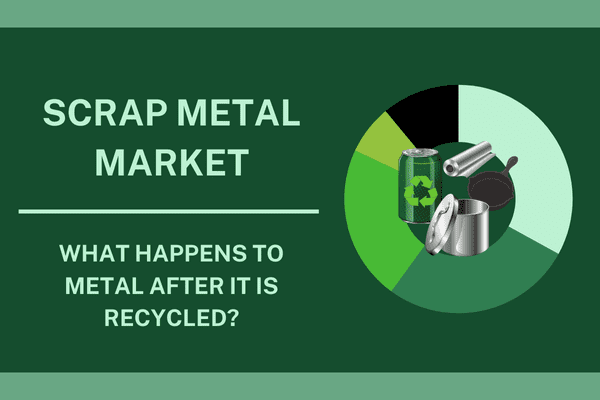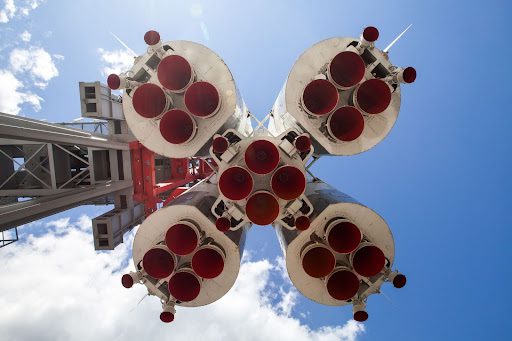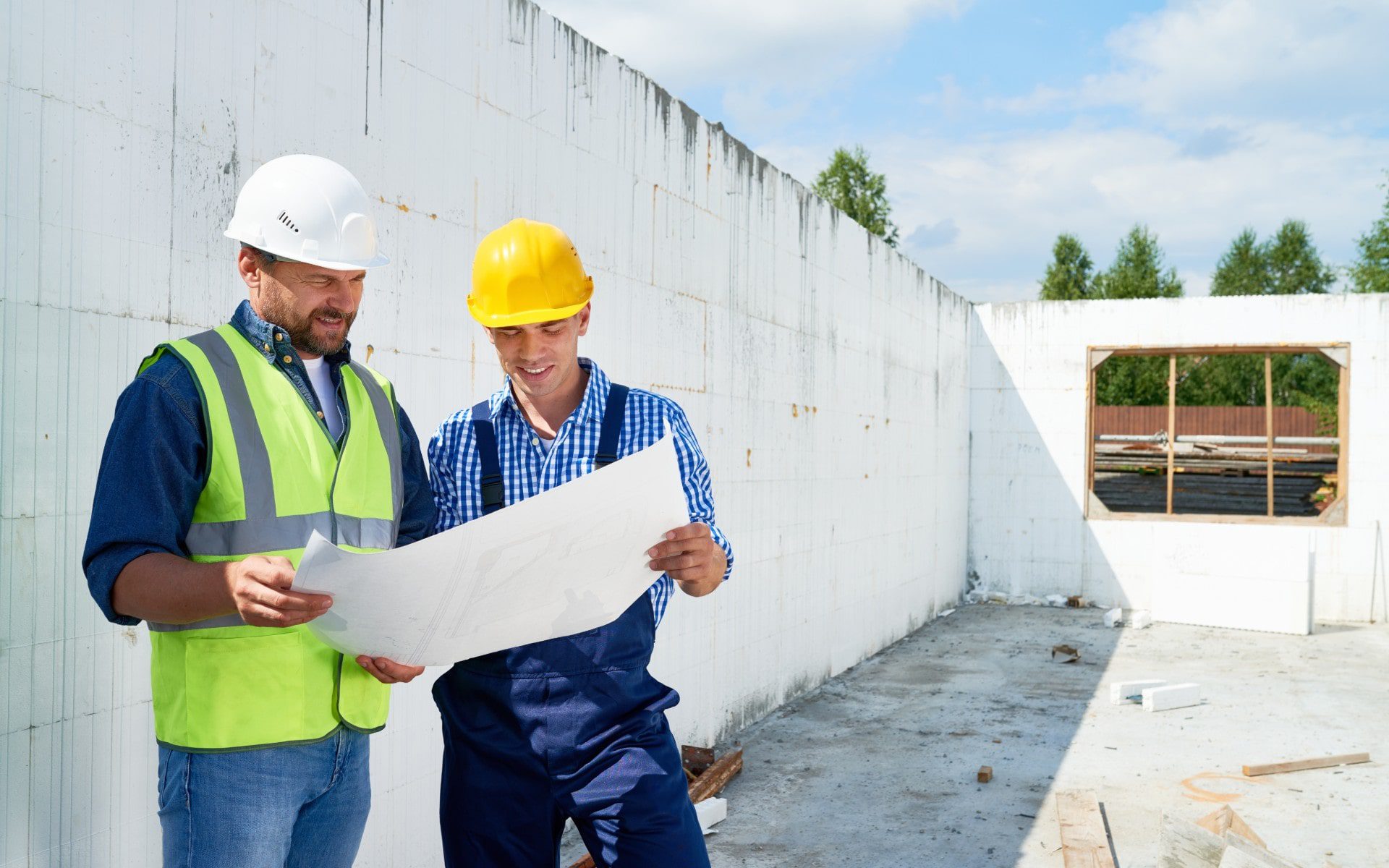
In the world of business, people say that time is money, often companies and employees strive to complete their tasks and projects as fast as possible. While many times the old adage is true, and completing jobs on time is a good thing, we’re asking you to slow down.
If you’re a construction, renovation, demolition, electrician, manufacturing or plumbing company, feverishly working on finishing a job may cause you to lose out on a revenue stream that you may have never even considered — recycling your scrap metal by way of deconstruction.
This may add time to your overall project, but it is worth it for several reasons.
Let’s dive in.
What is Deconstruction and What Constitutes C&D Debris?
When we say deconstruction, what we mean is disassembling a structure or room before destroying it. Starting with a scalpel rather than a sledgehammer may be the right way to think about it.
While there are numerous benefits which we will discuss later, the base reason for deconstruction is to salvage reusable materials and reduce disposal costs.
Deconstruction can vary from saving only a few lighting fixtures or even flooring materials to salvage everything and leaving only the foundation of a structure behind before destroying it and rebuilding.
The EPA defines Construction and Demolition Debris as “materials generated when new building and civil-engineering structures are built and when existing buildings and civil-engineering structures are renovated or demolished.” Quite a broad definition.
Below are examples of some common C&D materials:
- Concrete
- Wood (from buildings)
- Asphalt (from roads and roofing shingles)
- Gypsum (the main component of drywall)
- Metals
- Bricks
- Glass
- Plastics
- Salvaged building components (doors, windows, and plumbing fixtures)
- Trees, stumps, earth, and rock from clearing sites
Where Can I Find These Metals?
Throughout any structure, you’ll find plenty of scrap metal that you can save and recycle. This will be an easy task since, as a construction, renovation, demolition, electrician, manufacturing or plumbing company, your staff will have access to the appropriate tools to efficiently and safely remove these items.
The following are some common items and places to look for these valuable pieces:
- Bathroom fixtures such as sinks
- Lighting fixtures
- Ceiling fans
- Air conditioners
- Water pumps
- Water heaters
- Large appliances
- Microwaves
- Piping located in walls
- Garage doors
- Hinges
- Gutters
- Pool screens
- Screen doors
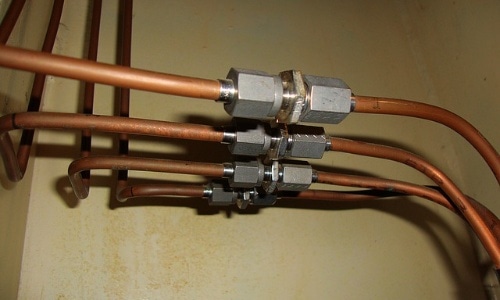
Other C&D materials can be recycled, such as wood and concrete, but for our purposes, we are focused on scrap metals.
Why Deconstruct?
Many different reasons exist for deconstructing a building before demolishing or moving forward with your construction project. However, we will be looking at it from a recycling standpoint. When you deconstruct, you can salvage valuable metals that can be recycled and, in turn, increase your company’s overall revenues.
Examples of C&D debris that can be recycled and are available through deconstruction are as follows:
- Copper
- Aluminum
- Brass
- Zinc
- Nickel
- Steel
- Stainless Steel
- Aluminum
Prices per pound vary by material and state, but regardless the point remains, there is money to be made. Imagine just demolishing a structure and letting valuable metals such as these be lost forever to a landfill.
Regarding the Environment
Another example of why you should go the route of deconstruction before demolition when you recycle it keeps these materials out of already crowded landfills. According to the EPA, 569 million tons of C&D debris were generated in the United States in 2017, which is more than twice the amount of generated municipal solid waste.
Additionally, recycling scrap precludes the need for mining for new ores. Mining for new materials often causes pollution and is a dangerous process. The American Geosciences Institute reports that of all of the environmental concerns associated with mining, the top four are:
- Physical disturbances to the landscape (altering of the physical aspect to build the mine – tunnels and disposal pits)
- Soil and water contamination (chemicals used in the mining process can seep into groundwater supplies)
- Air contamination (acid rain and emission of chemicals from smelting operations can pollute the air)
- Public safety (mine collapses can be dangerous, and sometimes hidden sinkholes are left behind)
Disposal Costs
Aside from the environmental benefits of keeping these materials out of landfills, it also reduces your disposal costs. Some items simply can’t be recycled and have to be taken to a waste management facility. As you know, this can get expensive. Whether it’s renting a roll-off dumpster or supplying your vehicles, it takes up labor hours going to the weigh station, waiting in line, and eventually being able to dump. On top of that, you have to pay disposal fees! Doing everything you can to prevent landfill waste will save you money in both the short and long run.
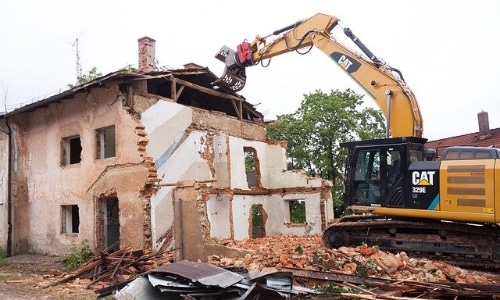
Supporting the Economy
Just as you and your company support jobs, as does the recycling industry. An article in Recycling Today, a publication dedicated to the C&D industry, cites that in addition to its positive environmental benefits, the recycling industry is responsible for more than 531,500 jobs and an overall economic impact of nearly $110 billion.
The article references a 2019 study that revealed that 164,154 jobs are being directly supported by the recycling and brokerage operations of the scrap industry in the U.S., and the industry indirectly supports an additional 367,356 jobs through suppliers and the indirect impact of the industry’s expenditures.
Building for the Future
Given the numbers on C&D scrap metal and waste as well as the environmental and economic impacts of scrap metal recycling, it is prudent from a financial, ecological and practical standpoint to consider incorporating future deconstruction into new projects.
Additionally, consider buying materials from scrap metal buyers/sellers and other recycling facilities rather than buying new can help reduce demand for mining of new materials and help to protect the environment.
Ways to Build for the Future
The following are ways to build better for future deconstruction and salvaging on C&D materials:
- Designing floor plans and fixtures that can be easily accessed and disassembled
- Using quality materials that will last and can be recycled
- Making use of hardware fasteners such as nails and screws rather than adhesives such as glues
- Minimizing diversity in terms of materials used
- Training or retraining of staff to prioritize deconstruction and separation of recyclable materials
Safety
Always prioritize the safety of workers and the use of safety equipment when disassembling. Houses and other structures such as older industrial facilities or even offices can be contaminated with potentially harmful materials. Construction and demolition workers can be especially vulnerable during the deconstruction and demolition processes.
Examples of risks associated with this process include:
- Asbestos exposure
- Exposure to toxic chemicals
- Exposure to lead paint
- Encounters with dangerous animals that may have taken up residence within the structure
Make and Save Money on Each Job
Recycling your C&D scrap metal and debris can help to generate a new revenue stream and save on costs for your construction, demolition, or renovation company that you may have been previously missing out on.
In addition to increasing revenues, your business can help the environment by lessening the number of new materials that need to be mined and shipped.
Deconstructing before you demolish or renovate, then separating the recyclable materials, as well as building future projects with this process in mind, may take some time, but the rewards are worth it.
Brokerage, Trading, and Logistics
Your team has successfully deconstructed a structure and separated all of the materials designated for recycling. You are ready for demolition/remodeling/new construction.
However, handling and transporting these materials can be a bit tricky as some of these things can be quite large or, at the very least voluminous. This is where GLE Scrap Metal comes in.
Here at GLE we’re not just scrap metal buyers. We help you with the logistics of the operation as well. We are happy to arrange your scrap metal pick up and drop off for construction, renovation, and demolition companies.
You’ve already slowed your job down to ensure that you’re making environmentally sound decisions, why add coordinating transporting all the scrap metal to the recycling facility to your to-do list? Let us handle the transportation and processing of your C&D scrap metal salvaged materials.
GLE Scrap Metal is a premier scrap metal recycler, GLE Scrap Metal performs environmentally-friendly processing and recycling of all base and precious metals. We purchase, process, and re-integrate all recyclable base metals.
Are you looking for business solutions? GLE Scrap Metal provides options for construction and demolition, renovation, and metal recycling solutions for any industry as well as transportation solutions for most of the continental U.S. We even handle E-waste disposal and processing in a safe and environmentally conscientious way.
To find out more, visit our website and contact us or call us at 855-727-2788.

